North Acton Tube station is an unlikely starting point for a journey involving a Class 56, the Chiltern Main Line… and 1,200 tonnes of construction material.
Next to this busy Central Line station is the hotel where three of Devon & Cornwall Railways’ (DCR’s) staff have lodged, after bringing the ‘empties’ back to the capital the night before. It is May 9, and despite it being (supposedly) spring, it’s cold.
Walking into the hotel, RAIL finds the DCR staff, led by Traction Inspector Robert Buchanan Scott, finishing breakfast and finalising the plan for the day. Scott is an engaging character who has clearly built a team spirit. This is vital - DCR is still a small freight company fighting tooth and nail for contracts, and the team needs to be pulling in the same direction so that DCR can prove it is capable of going toe to toe with the big boys.
The plan, essentially, is to finish breakfast, jump in the company car and head over to Willesden Euro Freight Terminal. From there, Scott will drive a train filled with spoil excavated from a building site to Calvert terminal in Buckinghamshire, where it is unloaded.
The return leg (officially booked to leave at 1825, but it often leaves much earlier) will be driven by Trainee Driver Nick Stevens, who is learning the route. Today is his final trip before being officially ‘passed out’ on the route.
It is a simple out-and-back job, but there is a bit of shunting to do, so Shunter Adam Frost is also here. The youngest member of the team, he bears the brunt of the other two’s quips. Scott remarks that Frost made the mistake of revealing that he shaves his arms, and has suffered for that ever since. Frost takes it all in good humour.
A quick trip to Tesco to stock up on provisions - it will be a very long day - and Scott then drives the four of us to Willesden. It’s not far, and brings home just how close the railways in West London are to each other.
As the car pulls into Willesden Terminal, Scott points out an unusual sight. “It’s not every day you see a flying train!” he says.
He’s right. A small narrow gauge construction train, which he believes was used in the building of the Channel Tunnel, is suspended in mid-air from a crane above a building site. DCR is taking the spoil from this site to Calvert.
Scott and Stevens start to debate whether the train did work under the English Channel, before moving on to discuss former
colleagues they both knew.
Scott and Stevens are career railwaymen. The former began life on the railways in 1986 at Eastfield. He has since worked for a number of companies, including Advenza Freight, Freightliner and latterly Grand Central. While at GC he freelanced for DCR, which was able to take full advantage of his large traction card (the trains he is passed to drive on the national network) and his route knowledge.
Stevens has worked for Direct Rail Services and Freightliner, as well as Connex. He also spent a year driving trains in Australia, before returning to the UK and signing up with DCR.
He suggests, with a chuckle, that the reason he joined DCR was the chance to drive Class 56s. (RAIL is not entirely convinced that this is not the case.)
Once the car is parked, it is time to find the train - a 20-wagon train carrying 1,200 tonnes of material that was once (in effect) part of London.
Standing silent at the front is 56312. This locomotive was originally 56003, and is almost 36 years old, having been delivered in 1977.
Withdrawn by EWS, it was actually sold for scrap and sent to C F Booth’s Rotherham scrapyard, before being bought by Steve Beniston in a deal that saw 37904 and 56023 sold to Booth’s instead. Beniston restored the locomotive to operational condition, and returned it to Loadhaul colours.
It was then bought by Hanson Traction for a return to the main line. HT was owned by Garcia Hanson, who later sold his business and assets to Iowa Pacific, the owner of DCR. The latter is the main line arm of the business, and operates trains on the national network. Hanson is the vice president of British American Rail Services, which is the overall UK business brand.
Last year the ‘56’ was adorned with branding advertising the Railfest 2012 event at the National Railway Museum, and while that was removed shortly after it was displayed at the June event, the scars of the branding can still be seen almost 11 months later. RAIL takes a look at the ‘56’ while the DCR staff set about preparing the train.
Under a massive gantry that was once used for loading container trains, they carry out safety checks, while Scott takes a look inside 56312. It is stabled here overnight, so is secured with a chunky padlock. Scott then questions who cleaned its cab last night, as it’s not to his own impeccable standards. “I may have slight OCD tendencies,” he admits (Stevens nods in the background), “but I like a good working environment.”
The yard is owned by DB Schenker, but when another train arrives in the siding next to us, it is a Freightliner Heavy Haul train. This engineer’s train, made up largely of flat wagons carrying sleepers, is propelled at walking pace by 66610.
Two members of staff based here, both employed by DB, ensure that everything is OK before busying themselves with their duties. Scott explains that despite DCR and DB being rivals, he cannot fault the help that both he and his staff receive here. “They’re good lads,” he says.
RAIL climbs aboard 56312 with Stevens and Scott, and we wait for Frost to finish his work. When that is done he too climbs aboard, provides Scott with the relevant information about the train, and signs some paperwork.
There is a complicated shunt to complete only a few yards ahead, and Scott checks to see if Frost is coming to Calvert with us. He isn’t.
Just in front of 56312 is a level crossing that has been used by a few vans while we have been preparing. Scott asks Frost to check with Network Rail’s control centre that we can proceed, so he hops down and makes a phone call.
A thumbs-up a few minutes later tells us we can proceed. But there is a van coming. Scott is happy to let the van cross before the barriers are dropped and we can move, but Frost has other ideas and the van’s path is blocked. Scott chuckles: “You cannot fault that,” he says. RAIL thinks the van driver may disagree.
Having watched the ‘56’ be started, and then climbing in the cab, RAIL is surprised how quiet the locomotives actually are. When viewed from the lineside, Class 56s are known to ‘scream’, but there is none of that in the cab as we move slowly over some complicated trackwork ahead of a shunt manoeuvre (necessary because, at the moment, we are pointing in the opposite direction of our destination).
Slowly we edge under the North London Line and past Willesden TMD, where a collection of Class 86s and an ‘87’ stand. Their replacements on the West Coast Main Line whizz past, taking the last of the commuters into London.
We veer left, slowly, and edge past a scrapyard, before coming to a halt near Mitre Junction, where once diesel locomotives replaced electric locomotives on cross-country trains in the 1980s. None of that now, though.
As we wait, Scott explains the differences between the ‘56s’ in the DCR fleet. “56303 is the best, it is very strong. 56091 isn’t far behind. This one is good for this job because it is dependable. It may not be the most powerful, but it is reliable.”
RAIL asks what he means. Surely all Class 56s are the same? Also, Romanian-built ones, such as 56312, are known to have been built poorly.
“It’s like older cars, they have individual performance quirks. Older locomotives are the same.” Both Scott and Stevens agree that 56311 is the worst, but that seems to be less to do with performance, and more because it is always cold.
Scott’s job is to organise traction for contracts such as this, and for individual moves. He says he would like to see Class 66s on these trains, and maybe even a ‘70’, because he believes it would send the right message to clients.
Modern locomotives that meet strict new emissions deadlines would make sense, he says, and perhaps portray a better image. Yet he completely understands the logic in DCR owning its own locomotives - there is less risk because if there is no work, the locomotive is not being hired from a rolling stock company to stand idle. This happened with Advenza when Scott was there, and he saw what happened. Doesn’t stop him wondering…
After receiving clearance to run round the train, Scott takes 56312 forward and swaps cabs, having parked on a nearby bridge. With a green light waiting, the ‘56’ scuttles back, navigates more complex trackwork, and eventually couples to its train.
Almost immediately it seems, we nudge forward, pass Willesden again, pass under the NLL again, and veer left along the freight-only line towards Acton.
We are then held at a red signal while NLL ‘378s’ pass us, a Freightliner refuse train gets the road ahead of us (“we’ll pass that later, it’s going to Calvert, but gets ‘looped’ for two hours,” says Scott), and a Colas Rail ‘56’ passes bound for Ilford to collect an ‘86’ and move it to Willesden. Each train that passes sees the drivers greet each other.
Eventually, following a call to a signalbox, Scott gets permission to proceed and we head for the Great Western Main Line. Another red signal momentarily halts us on the gradient down towards the GWML, but after a couple of Thames Turbos, some Heathrow Express units and a High Speed Train or two pass, we get the road.
Now the ‘56’ gets the chance to show off. These locomotives were built to move heavy freight trains, and move it 56312 certainly does. Scott accelerates, and the ‘56’ is soon powering away. It is getting noisier, and the ‘thrash’ is really very impressive.
As we pass Acton Main Line a photographer takes a snap of us, while in the adjacent yard the FL refuse train waits for a path. There is no stopping us, and as the train gains momentum so 56312 thrashes away still more.
We are bound for West Ealing, and reach it all too soon. Scott slows for the junction, and we leave the Great Western Main Line and head for Neasden.
This takes the train through West London and Middlesex, and the two-track line seems sparsely used. Another photographer gets a snap at one of the stations, and before we know it we are out in Metroland on the Chiltern Main Line. There is a climb up beside a fly-over here, and soon we have modern Chiltern Railways diesel multiple units passing us.
The ‘56’ is performing well, and Scott is happy with how it is working. “Always seems to work for me,” he grins. Meanwhile, Stevens is watching the road that, from May 12, he will be driving this ‘56’ along solo.
Scott clearly enjoys his work at DCR, describing it as “hard work, but worth it”. Because the company is small, he will do more work than others, and his knowledge of the work is more than most drivers.
“I could tell you exactly what the profit margins of this train are,” he says. “I won’t, but I can. I have to because I have to cost it. I know how much it costs to fuel the ‘56’. It needs 6,000 litres and we fuel it every night. Not fully, but enough.
“This contract is very good for us, and a very good advert. It is the type of contract bigger operators go for and win.”
He says that hopefully this will prove that DCR can do the work. The deal is for a year, and probably longer, and involves trains running every weekday. So far there have been no major problems, and no failures.
RAIL has travelled on a few freight trains, and notices on this one that there are few occasions where it is ‘looped’ to allow faster trains through. This is unusual, and means Scott is able to put the ‘56’ through its paces. Once we are through the suburban stations and out into the rolling Buckinghamshire countryside, the ‘56’ is soon shifting the train and bowling along at a comfortable 50mph.
He is giving Stevens pointers and advice, such as the best places to apply some power, or to shut it off. As we approach High Wycombe, he recommends letting it coast. Then, as we round a bend, he ‘opens it up’ again and 56312 screams through the station. Someone takes a photograph, while a few passengers look baffled as this freight train blasts its way past.
From here until Saunderton, where the two-track railway splits into two single lines, the ‘56’ is climbing. This is a steep bank, and the ‘56’ is using all its 3,250hp to get its heavy train up the bank. RAIL still expects there to be more noise than there is, and is surprised when told that this is probably as loud as it gets.
Scott suggests that in the autumn the leaf-fall may cause a problem and require the train to be re-routed. This is because trees line the railway, and the leaves could have an adverse effect on the ‘56’ being able to get the grip needed to apply power. He and Stevens agree that this problem will be investigated.
Once we breast the summit, it is then downhill. This is where some masterful driving is required - there is little need to apply power, but Scott must be very astute with the brakes, otherwise the wagons behind could gain momentum, and push his train along. Scott keeps the ‘56’ steady and we continue north.
At Princes Risborough we cross from the Down to the Up line, to gain access to the branch that runs to Aylesbury. This little line
is well known as the home to Chiltern Railways’ two Class 121 Bubble cars, but a ‘165’ is in the bay served by the branch line trains as we roll through.
Soon we are on this delightful little branch line with its small country stations, where this big, heavy, noisy freight train seems out of place. It’s not a long line, just over seven miles, and takes 16 minutes. There is a maximum speed of 40mph.
Aylesbury is soon upon us. The station is compact, with a large multi-floor building on our left, and a small three-platform station. Stabled next to the station is a collection of first-generation Class 117 and 121 vehicles used by Chiltern.
As we roll through the station the depot becomes visible on the left. Chiltern’s two operational ‘Bubbles’ (121020 and 121034) are stabled there, along with various vehicles from various Class 165s. The track remains doubled until we reach Aylesbury North Loop, where we are booked to be held for three minutes to allow a southbound Chiltern ‘165’ to pass. This is running from Aylesbury Vale Parkway station.
However, we eventually spend longer here. Scott has received a phone call from DCR staff who are at Calvert with a Didcot-Calvert flyash train. It is due to have left, but a broken rail is causing a problem.
“When will we move?” RAIL asks. “Not sure yet,” replies Scott, who then switches 56312 off. Stevens rings Network Rail, and confirms that we could be here for a while.
Scott passes the time by arranging a move involving a Class 31 for a few days’ time. He will move it to Cornwall, as well as Southampton and Bristol, and will be training a driver to use ‘31s’.
Meanwhile, two Network Rail staff are ambling along beside the train, spraying the vegetation at the side.
“Blimey, they really are cutting costs, aren’t they? Shouldn’t you at least have an MPV?” Stevens jokes with them. They take it in good humour, and discuss what is happening. Stevens tells them, and they bid a cheery farewell.
After about 15 minutes we get a call telling us we can be on our way. Scott starts up the ‘56’ and, after collecting the token we need to run along the line, we are on our way.
The track is now single. After a couple of minutes we pass Aylesbury Vale Parkway station on the right, and now we are on a freight-only line. It is single, and takes us through rolling countryside. The occasional overbridge invariably has a photographer on it.
About halfway along the line, we pass Quainton Road. Here there is a preservation centre, with preserved vehicles (including steam locomotives) on both sides. We accelerate, while Scott mentions that he will be driving at an upcoming Nene Valley Railway gala.
Talk then turns to High Speed 2, as we are in the area where there is most fervent hatred towards the project.
Scott explains that when DCR staff visit facilities nearby, while still wearing their high-visibility clothing, they are asked if they work with HS2. “It’s the jackets, and they think we must be HS2 staff because we say we are on the railway.”
Scott believes HS2 should be built. He is a very keen fan of the railways, and believes all should be done to get as much freight and investment onto the iron road as possible.
Before long the brakes are applied, and the track is lined by an avenue of trees. This is the approach to Calvert, and we slow until coming to a stop by the groundframe.
Here Scott and RAIL hop out, with Stevens taking over. He will perform the shunt here, while Scott will ring NR to confirm the train has reached its destination and put the token away. When that is done, he will then drive RAIL to Bicester North.
With the shunting underway and his duties done, we transfer to four wheels - Scott takes the wheel and we head for Bicester. Passing through the town, we see DCR 56091 waiting near Bicester Town station. It was this that was delayed by the broken rail. “He’s missed his path, so must wait,” explains Scott.
As we head for the station, past anti-HS2 signs, Scott extols the virtues of DCR. “The job, for me, is great. It takes me everywhere and I can keep my traction card. The company is building, and it’s good to be a part of it.”
It may be small, but having watched its operations today, RAIL can see DCR growing. Not to the size of its rivals, but it can still help rail freight in the battle against the roads. And that’s no bad thing!

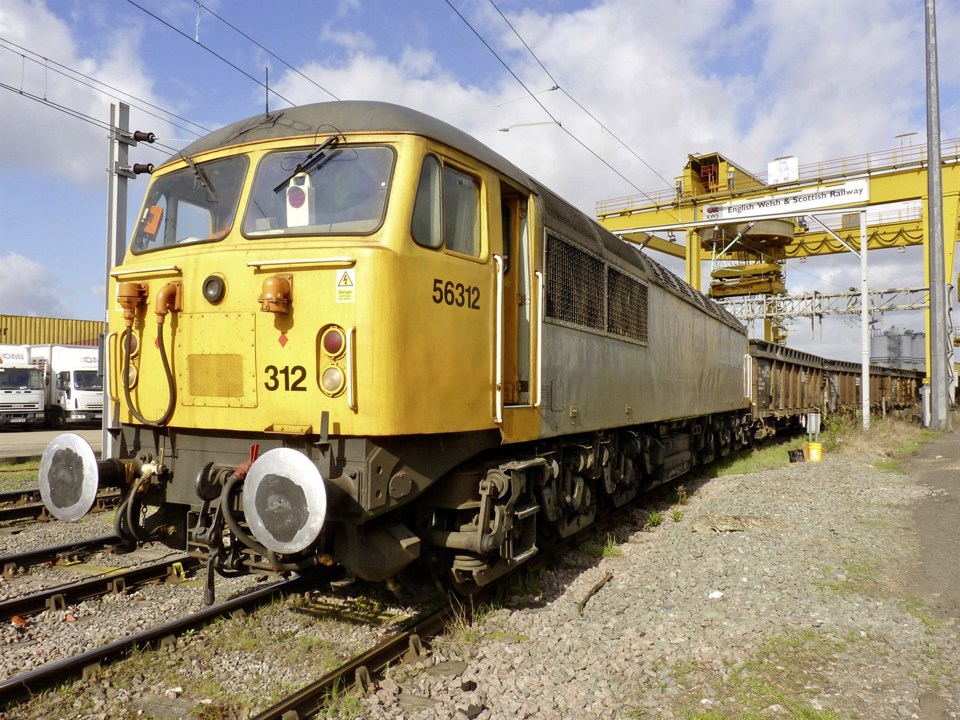
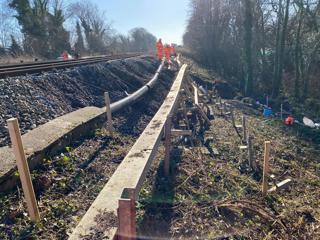
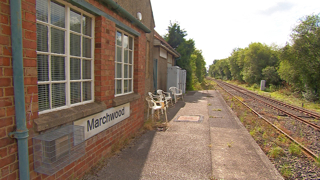
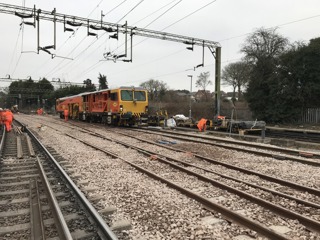
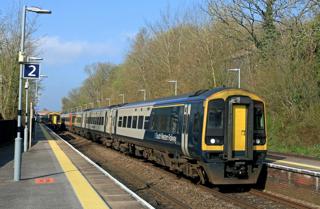
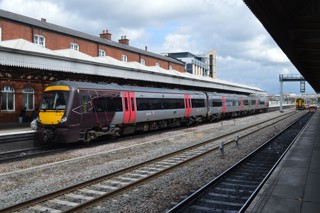











Login to comment
Comments
No comments have been made yet.